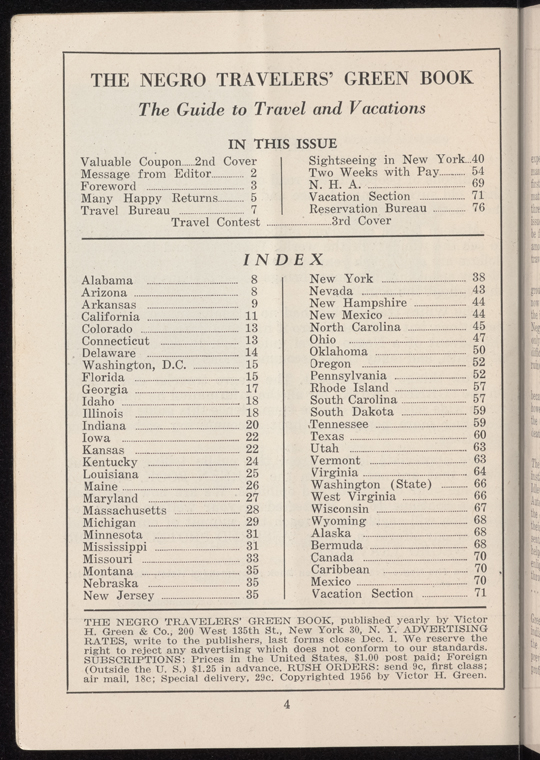Black Lives Black Motorists

Minneapolis, Minnesota December 4 2014
Photo by Fibonacci Blue, via Flickr
The renaissance that Victor Hugo Green’s The Negro Motorist Green Book is experiencing is long overdue recognition for the ingenious work that Blacks were forced to create in order to experience something akin to first class citizenship within this country. The Green Book’s revival as an interesting piece of Americana and archival treasure understandably has a feel-good narrative, but within our contemporary climate of #BlackLivesMatter, the guides that are included in the pamphlet deserve continued discussion of their value as not only a practical travel resource for their time, but also as a survival guide.
Jacksonville, Florida. Charlotte, North Carolina. Dearborn, Michigan. North Charleston, South Carolina. Prairie View, Texas. Palm Beach Gardens, Florida. St. Paul, Minnesota. Clevaland, Ohio. Tulsa, Oklahoma. All these states were destinations found in a copy of The Green Book, but sadly these are also locations where Black motorists have been killed by police or fellow citizens in the past 4 years—respectively, #JordanDavis, #JonathanFerrell, #RenishaMcBride, #WalterScott, #SandraBland, #CoreyJones, #PhilandoCastile, #DeborahPearl, and mostly recently #TerenceCrutcher. For the Jim Crow trees bearing strange fruit during Victor Green’s life, which necessitated his creation of the Green Books, the branches are still bearing fruit today because being a Black motorist in 2016 can still be just as deadly as many black people’s experiences eighty years ago in 1936.

Photo by Elizabeth Brossa via Flickr
Armstead, Myra B. Young. "Revisiting Hotels and Other Lodgings: American Tourist Spaces through the Lens of Black Pleasure-Travelers, 1880-1950." The Journal of Decorative and Propaganda Arts 25.The American Hotel (2005): 136-59. JSTOR. Web. 21 Sept. 2016.
Baumgartner, Richard. "NC Traffic Stops." Frank Baumgartner. University of North Carolina, n.d. Web. 21 Sept. 2016.
Epp, Charles R., Steven Maynard-Moody, and Donald Haider-Markel P. Pulled Over: How Police Stops Define Race and Citizenship. Chicago: U of Chicago, 2014. Print.
Foster, Mark S. "In the Face of "Jim Crow": Prosperous Blacks and Vacations, Travel and Outdoor Leisure, 1890-1945." The Journal of Negro History 84.2 (1999): 130. Web. 21 Sept. 2016.
Fryer, Roland G. An Empirical Analysis of Racial Differences in Police Use of Force. Cambridge, MA: National Bureau of Economic Research, 2016. Print.
Hall, Michael Ra-Shon. "The Negro Traveller's Guide to a Jim Crow South: Negotiating Racialized Landscapes during a Dark Period in United States Cultural History, 1936–1967." Postcolonial Studies 17.3 (2014): 307-19. Web. 21 Sept. 2016.
Harris, David. Driving While Black: Racial Profiling on Our Nation's Highways. New York: ACLU, 1999. Print.
Loewen, James W. Sundown Towns: A Hidden Dimension of American Racism. New York: New, 2005. Print.
Mapping Police Violence. N.p., n.d. Web. 21 Sept. 2016.
Meeks, Kenneth. Driving While Black: Highways, Shopping Malls, Taxicabs, Sidewalks: How to Fight Back If You Are a Victims of Racial Profiling. New York: Broadway, 2000. Print.
Rice, Stephen K., and Michael White D. Race, Ethnicity, and Policing: New and Essential Readings. New York: New York UP, 2010. Print.
Taylor, Candacy. Moon Route 66 Road Trip. Berkeley: Avalon Travel, 2016. Print.
Taylor, Keeanga-Yamahtta. From #BlackLivesMatter to Black Liberation. Chicago: Haymarket, 2016. Print.
Totten, Gary. African American Travel Narratives from Abroad: Mobility and Cultural Work in the Age of Jim Crow. Boston: U of Massachusetts, 2015. Print.
Wilkerson, Isabel. The Warmth of Other Suns: The Epic Story of America's Great Migration. New York: Random House, 2010. Print.
Read E-Books with SimplyE
 With your library card, it's easier than ever to choose from more than 300,000 e-books on SimplyE, The New York Public Library's free e-reader app. Gain access to digital resources for all ages, including e-books, audiobooks, databases, and more.
With your library card, it's easier than ever to choose from more than 300,000 e-books on SimplyE, The New York Public Library's free e-reader app. Gain access to digital resources for all ages, including e-books, audiobooks, databases, and more.
If you don’t have an NYPL library card, New York State residents can apply for a digital card online or through SimplyE (available on the App Store or Google Play).
Need more help? Read our guide to using SimplyE.

Comments
Green Book
Submitted by Steven (not verified) on September 24, 2016 - 3:36pm
Thank you.
Submitted by M. Foster (not verified) on September 27, 2016 - 11:33am
Traveling While Black in the 1950s and 1960s
Submitted by H. Toure (not verified) on October 12, 2016 - 10:50pm